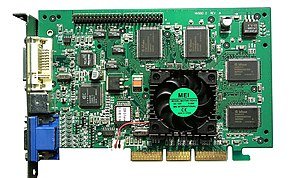The following article, Matob will explain about what GPU functions on computers and laptops in full so that hopefully will provide an in -depth understanding for you.
GPU function
The Graphics Processing Unit (GPU) is a single-chip processor primarily used to manage and improve video and graphics performance. GPU features include:
- 2-D or 3-D graphics
- Digital output to the screen monitor
- Texture mapping
- Application support for high-intensity graphics software such as AutoCAD
- Rendering polygons
- Support for the YUV . color space
- Hardware overlay
- Decoding MPEG
These features are designed to reduce CPU work and produce faster videos and graphics.
GPUs aren’t just used in PCs on video cards or motherboards; it is also used in mobile phones, display adapters, workstations and game consoles. If you interseted in android gaming on PC, maybe you need to read this article best emulator for low end pc without graphics card.
This term is also known as a visual processing unit (VPU).
The first GPU was developed by NVidia in 1999 and was called GeForce 256.
This GPU model can process 10 million polygons per second and has more than 22 million transistors.
GeForce 256 is a single-chip processor with integrated transformation, BitBLT image and support, lighting effects, triangular adjustment/clipping and rendering engine.

GPUs are becoming more popular as the demand for graphics applications increases. Eventually, they become not only an enhancement but a necessity for optimal PC performance. Dedicated logic chips now allow for fast graphics and video implementation.
Generally the GPU is connected to the CPU and is completely separate from the motherboard. Random access memory (RAM) is connected via graphics port acceleration (AGP) or peripheral express component (PCI-Express) buses.
Some GPUs are integrated into the northbridge on the motherboard and use main memory as a digital storage area, but these GPUs are slower and have poorer performance.

Most GPUs use their transistors for 3-D computer graphics. However, some have accelerated memory for mapping nodes, such as geographic information system (GIS) applications.
Some of the more modern GPU technologies support programmable shaders that implement accurate textures, node math, and color formatting.
Applications such as computer-aided design (CAD) can process more than 200 billion operations per second and generate up to 17 million polygons per second.
Many scientists and engineers use GPUs for more in-depth computational studies using feature vectors and matrices.
Hopefully our explanation of what the function of the GPU on computers and laptops will be able to help you better know and deepen the topics we discuss in this article.
